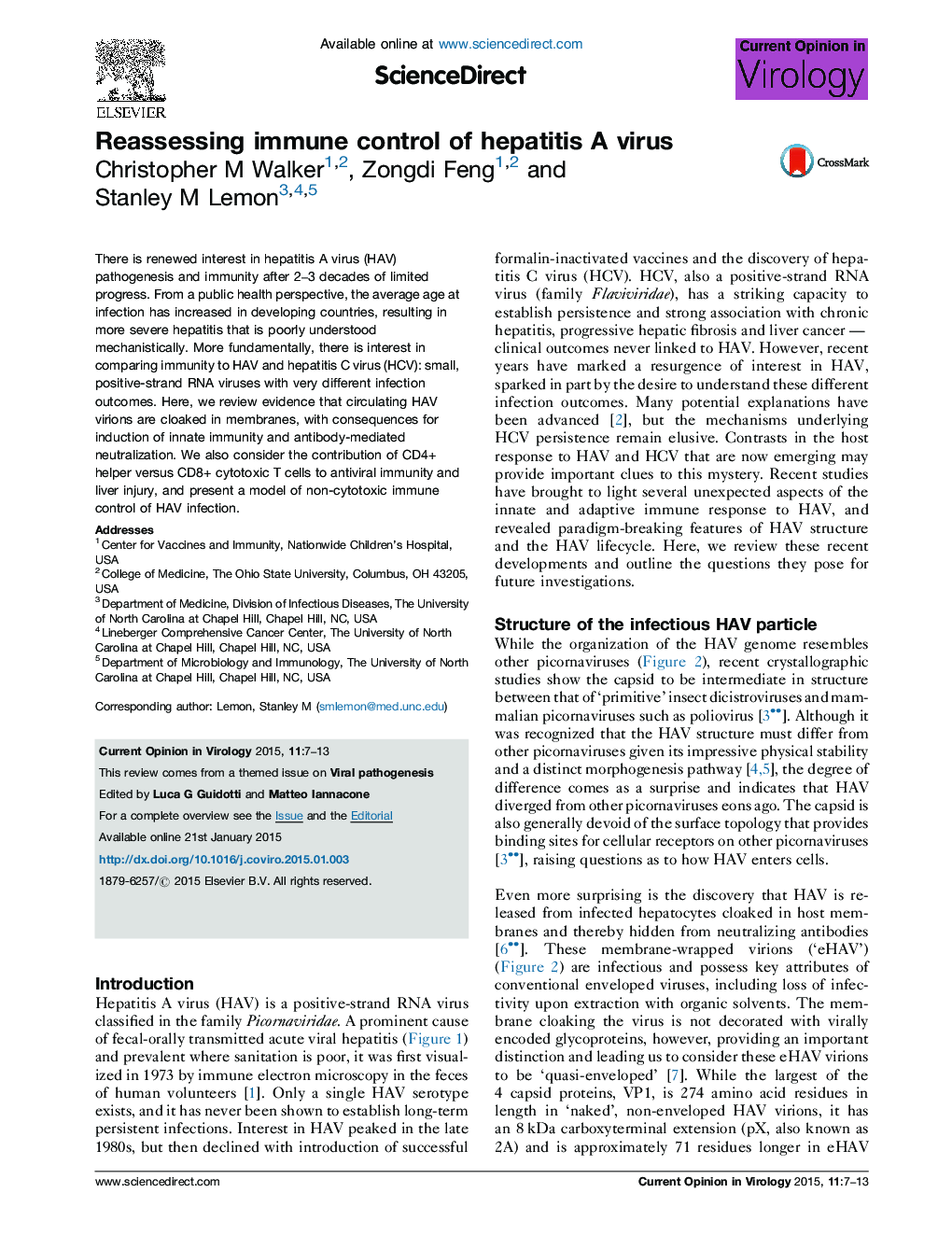| Article ID | Journal | Published Year | Pages | File Type |
|---|---|---|---|---|
| 5806508 | Current Opinion in Virology | 2015 | 7 Pages |
â¢Circulating virions are cloaked in membranes and resistant to neutralization.â¢Acute HAV infection induces a meager intrahepatic type I interferon response.â¢CD4+T cells appear earlier and acquire effector function before CD8+ T cells.â¢Immune control of HAV may be predominantly non-cytotoxic and cytokine driven.
There is renewed interest in hepatitis A virus (HAV) pathogenesis and immunity after 2-3 decades of limited progress. From a public health perspective, the average age at infection has increased in developing countries, resulting in more severe hepatitis that is poorly understood mechanistically. More fundamentally, there is interest in comparing immunity to HAV and hepatitis C virus (HCV): small, positive-strand RNA viruses with very different infection outcomes. Here, we review evidence that circulating HAV virions are cloaked in membranes, with consequences for induction of innate immunity and antibody-mediated neutralization. We also consider the contribution of CD4+ helper versus CD8+ cytotoxic T cells to antiviral immunity and liver injury, and present a model of non-cytotoxic immune control of HAV infection.
